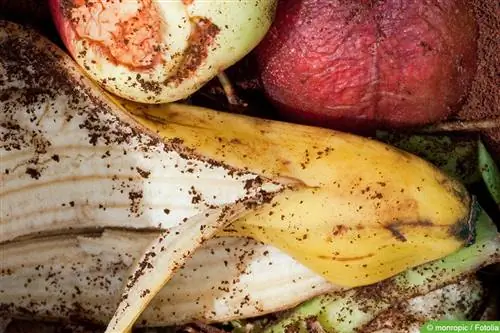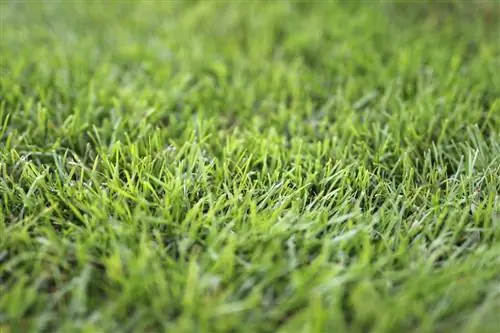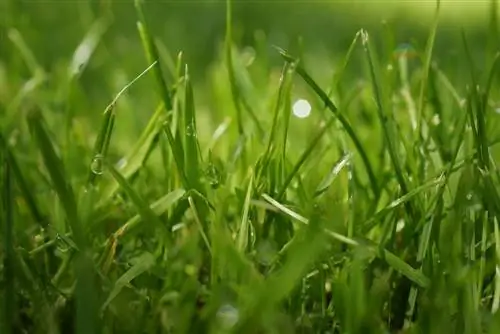- Author admin [email protected].
- Public 2023-12-17 03:39.
- Last modified 2025-01-24 12:45.
The excretions of seabirds, seals and penguins contain a lot of phosphate due to their special dietary habits. Phosphate is the most common naturally occurring phosphorus compound that plants need to live. In addition, like human excrement, they contain urea and ammonium compounds - both rich in nitrogen.
Due to the action on a very calcareous subsoil, a combination of organic and mineral fertilizer is created over time. Due to its high content of phosphorus, nitrogen and potassium, guano is considered an ideal NPK natural fertilizer.
Profile
- comes from the Inca language and means dung
- Excrements of special animals
- fine-grained mixture of various phosphates and nitrogen compounds
- high nitrogen and phosphorus contents
- also contains potassium and calcium
- Use: as a complete fertilizer
The history and occurrence of guano
The Incas already knew that bird dung makes plants grow better. As early as the 5th century BC, they used the excrement of seabirds that lived on the islands off the coast of Peru. Today the term is somewhat broader. The excretions of other animal species are also grouped together as organic fertilizers under the term guano:
- Bat Guano
- Seal Guano
- Penguin Guano
- Cormorant Guano
Guano is found everywhere in the world. The rich deposits off the coast of Peru consist of excrement, carcasses and eggshells of seabirds that have nested there for centuries. Over the years, these substances have become huge mountains of guano (up to 30 meters high) and converted into fertilizer due to their geological location. Other large deposits of guano can be found in southwest Africa, India, Egypt and Europe.
What nutrients are present in guano / do plants need?
Guano contains high levels of nitrogen (N), phosphorus (P) and potassium (K). Guano is one of the most important natural fertilizers with these main components. Large deposits of guano are divided into three layers because of the different ingredients:
- upper layer: yellow-brown color, little N, lots of P
- middle layer: yellow color, lots of N, less P
- lower layer: only traces of N
Guano fertilizer also contains a number of other nutrients such as potassium, calcium, sodium and various trace elements.
Plants need six main nutrients to grow he althy and strong. These include three non-metals:
- Nitrogen (N)
- Phosphorus (P)
- Sulfur (S)
Sulfur is only necessary as a trace element, while the other nutrients must be available in high quantities. There are also three metals that must be present in significant quantities in the soil:
- Potassium (K)
- Magnesium (Mg)
- Calcium (Ca)
Often the absence of one of the elements can be compensated for by an excess of another, without causing any relevant restrictions. What is important about these nutrients is that they are in water-soluble form. Elemental sulfur, for example, does not benefit a plant and can even be harmful.
Tasks of nutrients
Each individual nutrient has different tasks to fulfill. If a nutrient is missing, this leads to deficiency symptoms, which are briefly described here:
Nitrogen
- Task: Building plant protein, important in photosynthesis, necessary for growth
- Deficiencies: growth disorders, discoloration in the leaves and needles
Phosphorus
- Task: involved in the metabolism of the plant (growth, flower, fruit and seed formation)
- Deficiency: stunting or malformation of flowers, fruits and seeds
Potassium
- Task: important for water absorption, frost hardiness, tissue formation, taste of the fruit
- Deficiency: limp leaves, wilting
calcium
- Task: regulates the pH value in the soil (against acidification), important for the cell walls of plants
- Deficiency: soil acidification, disturbed plant growth
Magnesium
- Task: necessary for leaf green, involved in metabolic processes
- Deficiency: Tissue dies, leaves change color
Sulfur
- Task: important for the formation of amino acids and proteins
- Deficiency: no seed formation, curling of leaves
Products and Application
Guano fertilizer is available commercially both as a liquid product and in a wide variety of combinations with other fertilizers for different areas of application. The fertilizers are often optimized for the needs of different plant species. The information on the packaging means the percentage content of the individual nutrients in the fertilizer.
Tip:
NPK of 9+6+15 means: 9% total nitrogen, 6% total phosphate, 15% potassium (as water-soluble potassium oxide). These include:
Tomato fertilizer with guano
- organic-mineral fertilizer
- NPK: 9+6+15
- also contains magnesium
The high proportion of potassium is important for good fruit formation. Can also be used for many vegetables (cucumbers, zucchini).
Fir and conifer fertilizer with guano
- organic-mineral fertilizer
- NPK: 7+4+5
- also contains magnesium
Conifers require different amounts of nutrients. Since fruit formation is of secondary importance here, the potassium content in the fertilizer is significantly lower. Magnesium is also important here to prevent the needles from turning brown.
Berry fertilizer with guano
- organic-mineral fertilizer
- NPK: 4+4+6
- contains about 2% magnesium
Good for strawberries, other soft fruits and pome fruits.
Rose fertilizer with guano
- organic-mineral fertilizer
- NPK: 5+10+8
- also contains magnesium and usually also horn meal
Suitable for roses and berries, fruit and also many vegetables.
Fertilizer sticks with guano
- up to 100 days long-term effect
- NPK: 11+4+8
- also contain trace elements such as copper, zinc and manganese
Optimal for houseplants, plants in flower pots or containers. Overdosing or underdosing is prevented by the slow release of nutrients.
Liquid fertilizer with guano
- organic-mineral fertilizer
- NPK: 7+3+6
- additional trace elements
Administer via irrigation water. Good for all plants in pots, boxes or containers.
Safety instructions
Guano fertilizer not only smells unpleasant, but in its pure form it is also very caustic. Therefore, not only should gloves be worn when spreading, but the gardener must also be careful of the dust.
- always pay attention to the wind direction
- do not sprinkle on very windy days
- do not sprinkle on the plants and leaves
- work directly into the soil
- wear a dust mask if necessary
- if it comes into contact with skin, wash off immediately with plenty of water
What does organic or mineral fertilizer mean?
When it comes to fertilizers, a distinction is made between organic and mineral fertilizers. Mineral fertilizers usually work quickly because the ingredients (usually s alts or oxides) dissolve easily in water and are therefore immediately available to the plant. Organic fertilizers, on the other hand - which include compost, horn shavings, manure and guano - work slowly. The nutrients must first be released by microorganisms. Organic fertilizers therefore promote life in the soil and thus the quality of the soil. Commercial fertilizers are often combinations of both.
How organic fertilizers work
Organic fertilizer is a fertilizer whose components are not present in pure form, but consist primarily of natural waste products of plant or animal origin. Organic fertilizers work slowly. The nutrients are not immediately available. The conversion of organic matter into plant-available nutrients is a slow process. This activates soil life and sustainably promotes humus formation. Although the nutrients are not available to the plants immediately, they are available for a long time. Organic fertilizer has a long-term effect.
In contrast to mineral fertilizers, organic fertilizers must first be broken down by soil life. Plants can only absorb nutrients in mineral form, not organic. Therefore, soil bacteria first have to complete the conversion. These soil bacteria also hold onto the nutrients, otherwise they would quickly be washed out of the soil. This is why organic fertilizers contain fewer nutrients than, for example, mineral fertilizers. The organic nutrients simply work more effectively. Further advantages are that soil fertility is systematically built up, soil respiration is increased and the resistance of plants to diseases increases. This in turn leads to a reduced use of pesticides. An organic fertilizer leads to safe and constant nutrient ratios.
Organic-mineral fertilizers with guano
Organic-mineral fertilizers combine the advantages of both types of fertilizer. The biggest advantage of mineral fertilizer is its quick action. While with organic fertilizer the soil bacteria first have to convert the active ingredients, the nutrients of mineral fertilizer are available immediately. Mineral fertilizer is ideal for starter fertilization and is always used when plants show signs of deficiency. Any grievances that arise will be remedied as quickly as possible. Mineral fertilizers have no long-term effect. This deficiency is compensated for in conjunction with organic fertilizer. Immediate and long-term effects are combined. Organic-mineral fertilizers with guano are natural fertilizers, usually with a high guano content, up to 70 percent. The nitrogen content comes 100 percent from the guano content. The good thing about it is the balanced nutrient ratio for the garden soil. The mineral substances in good fertilizers usually come from marine deposits. The whole thing is refined with rock dust.






